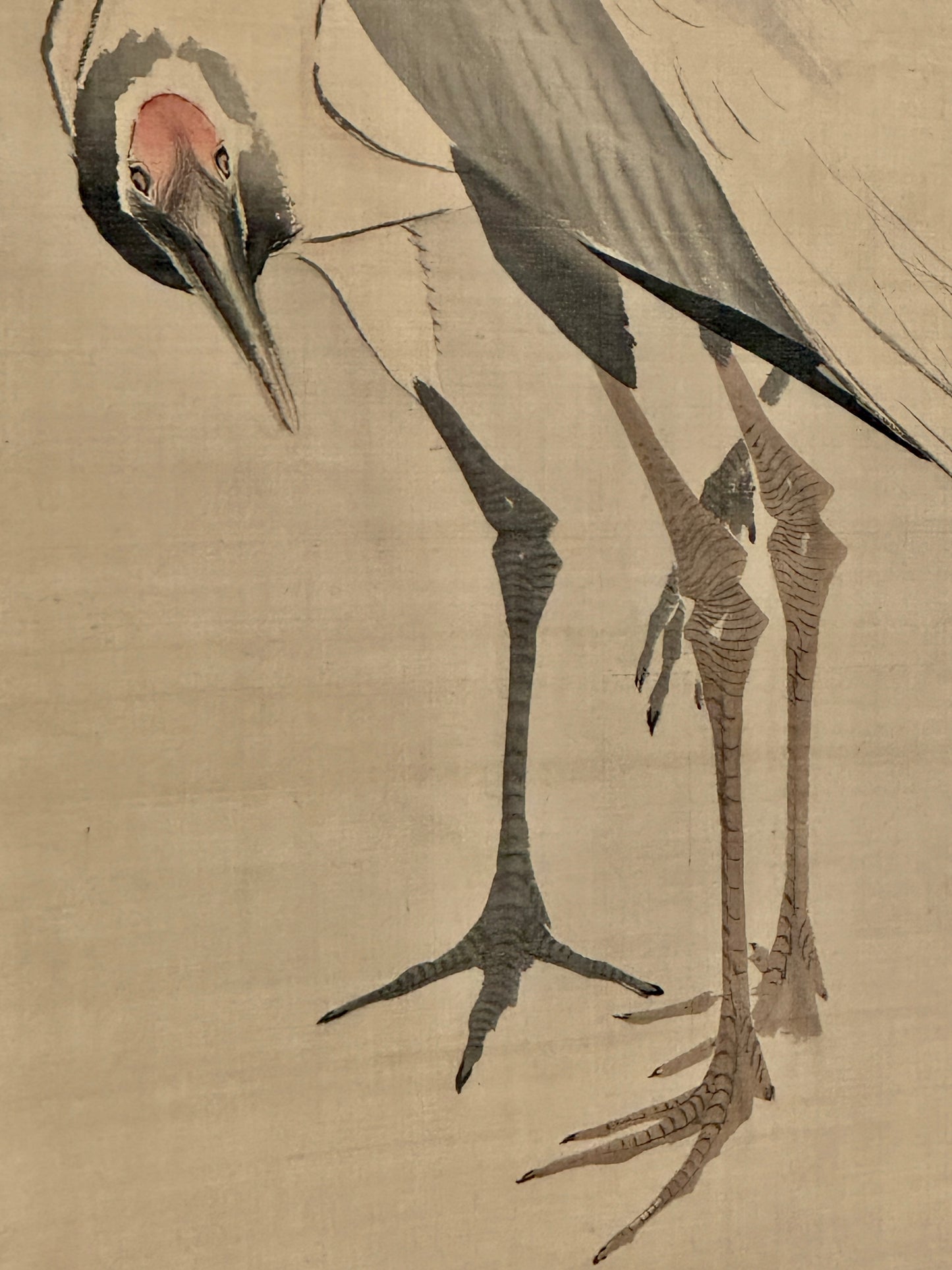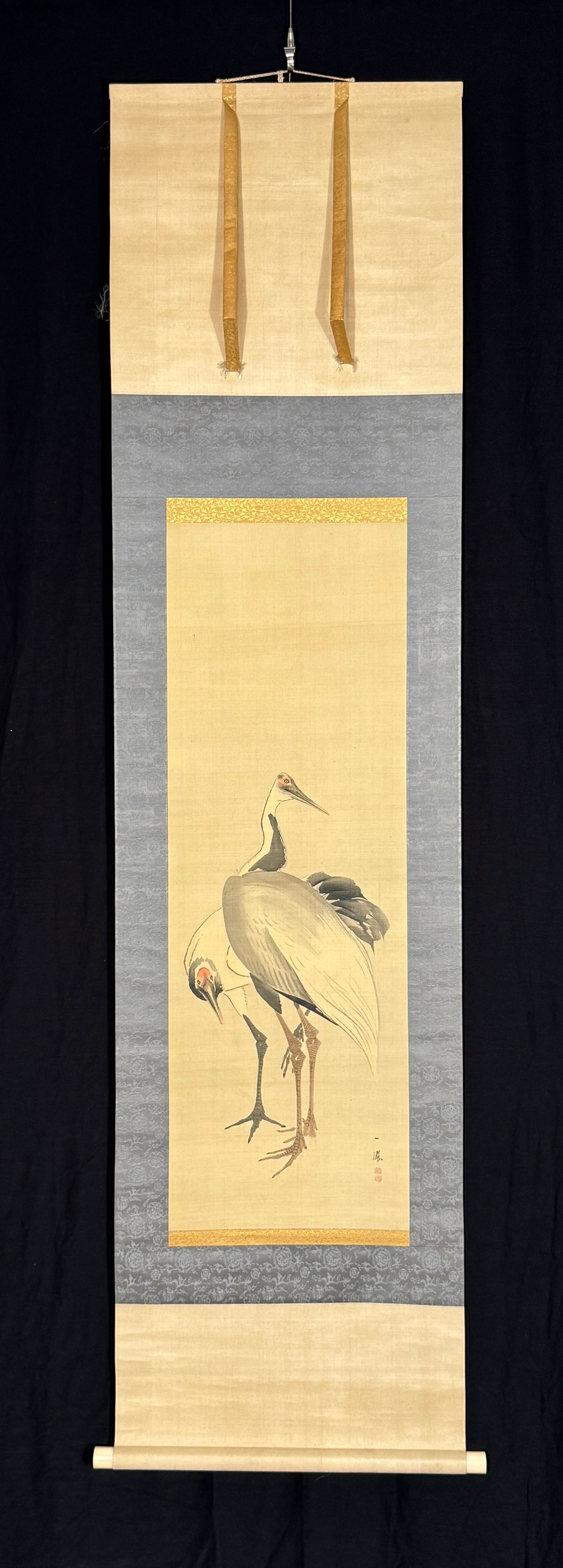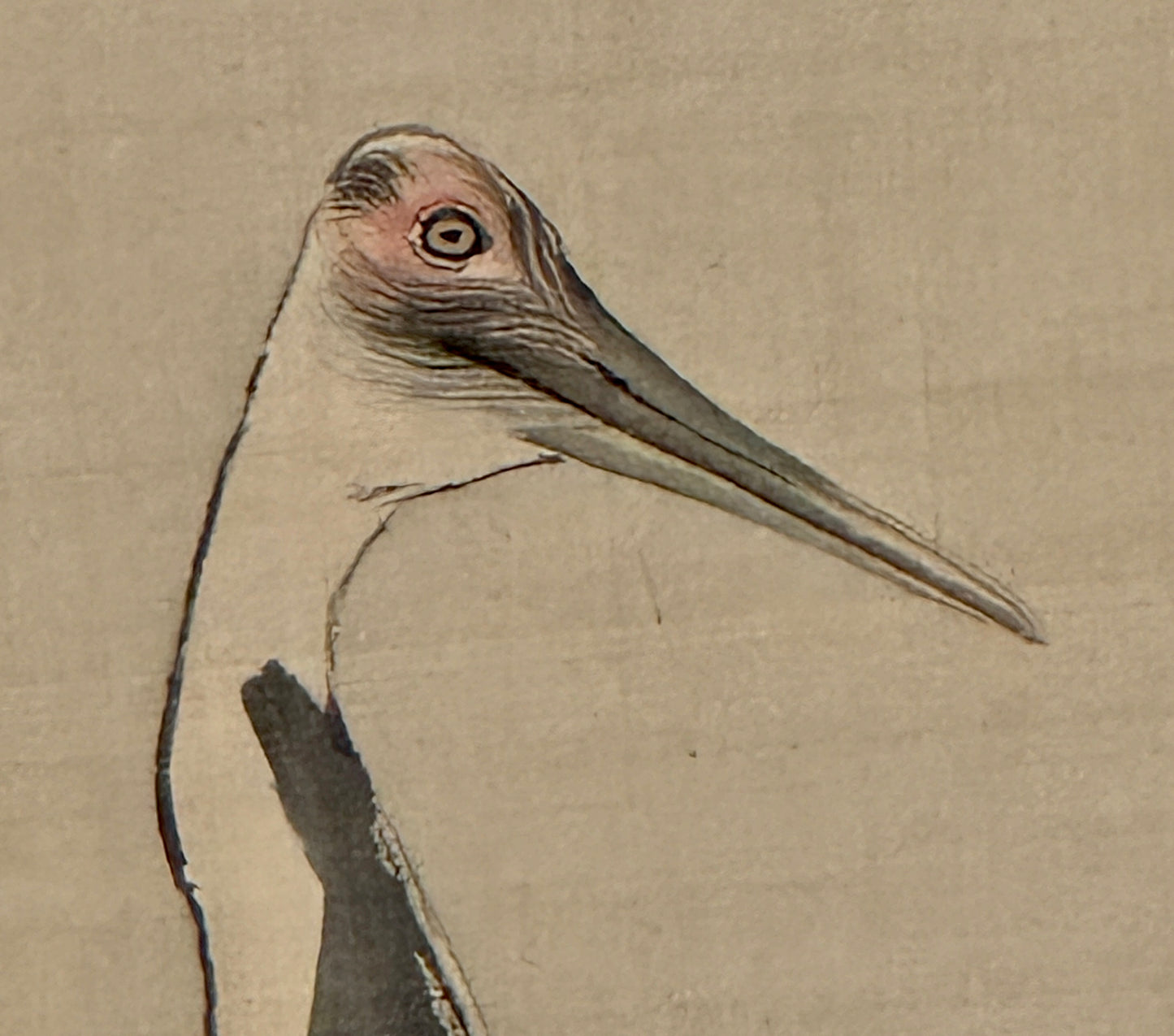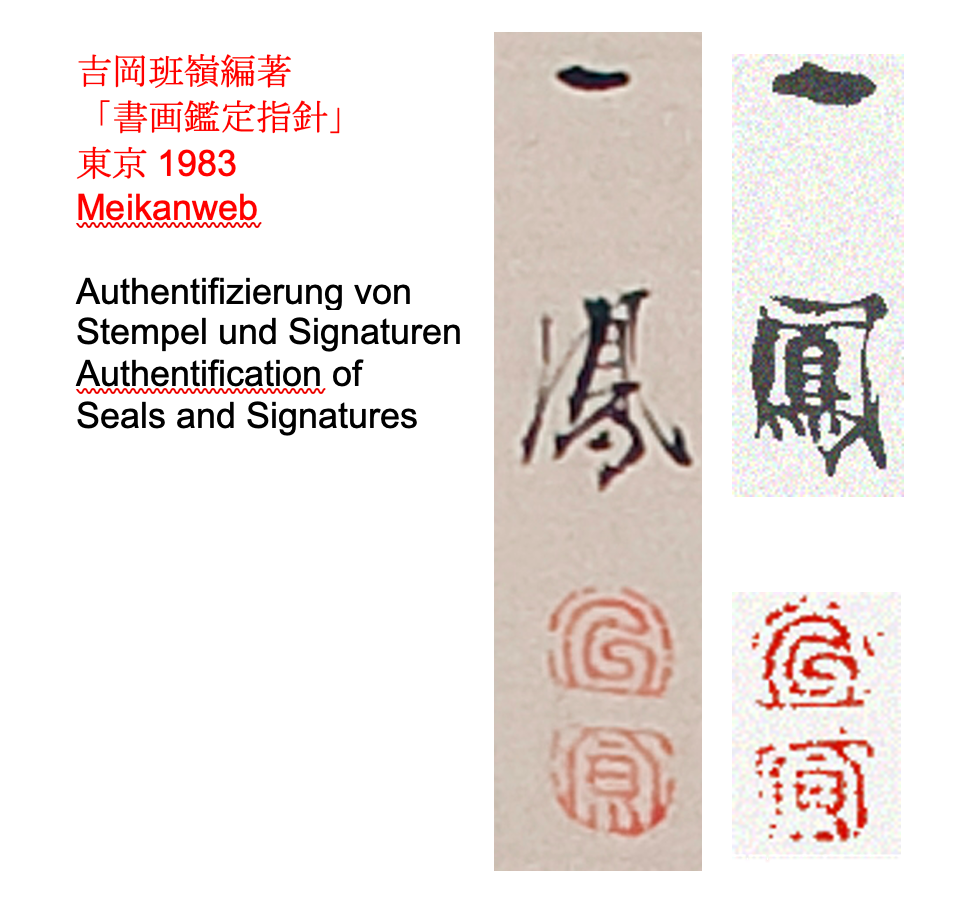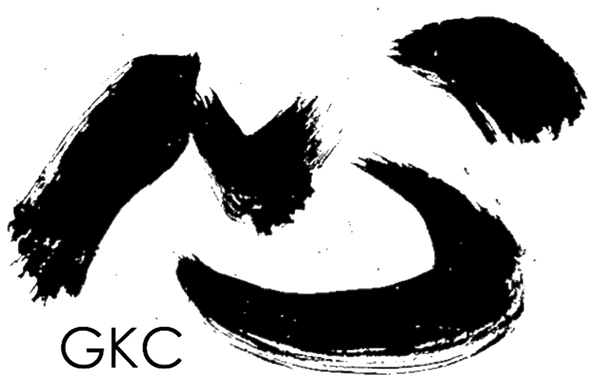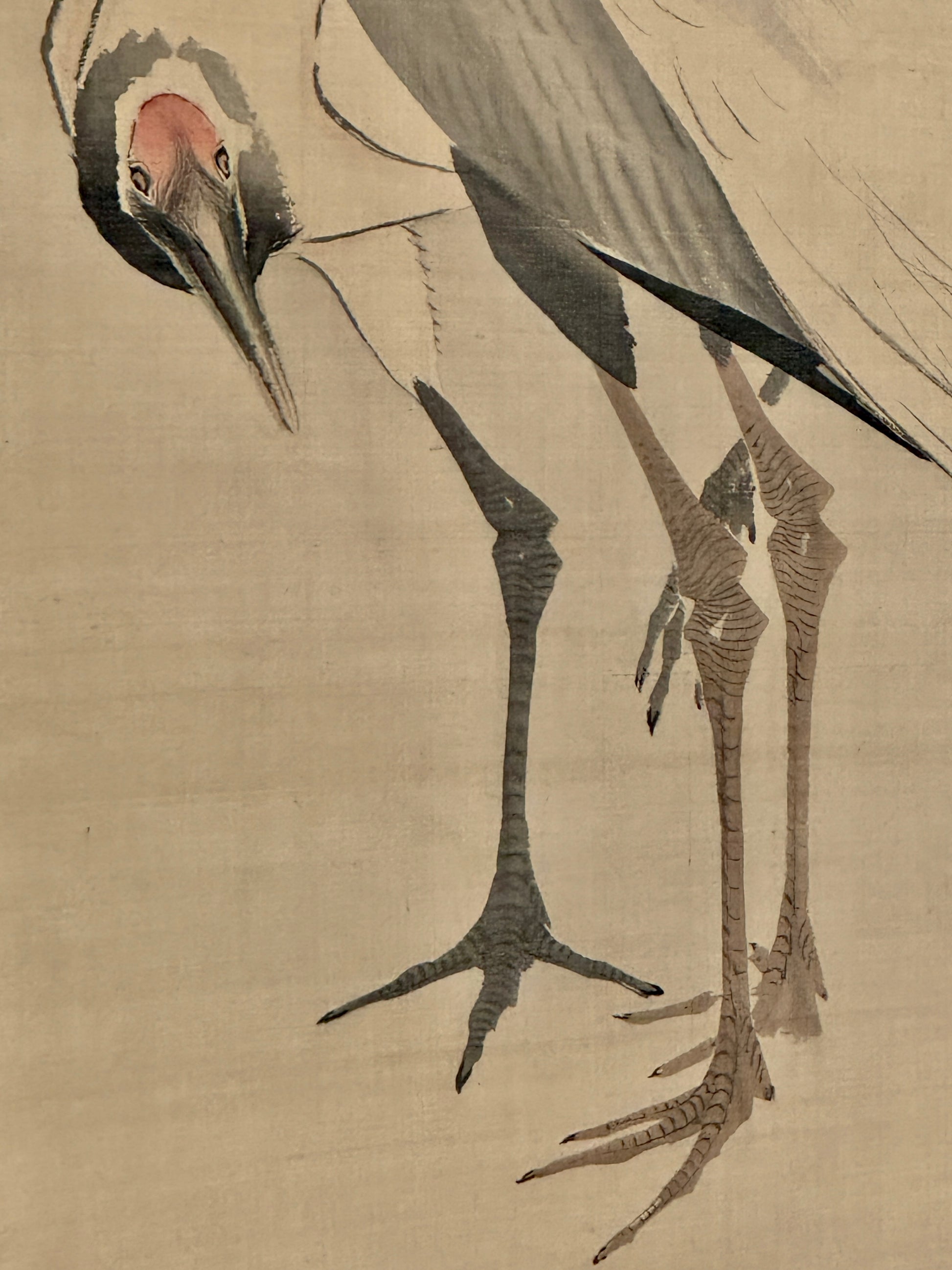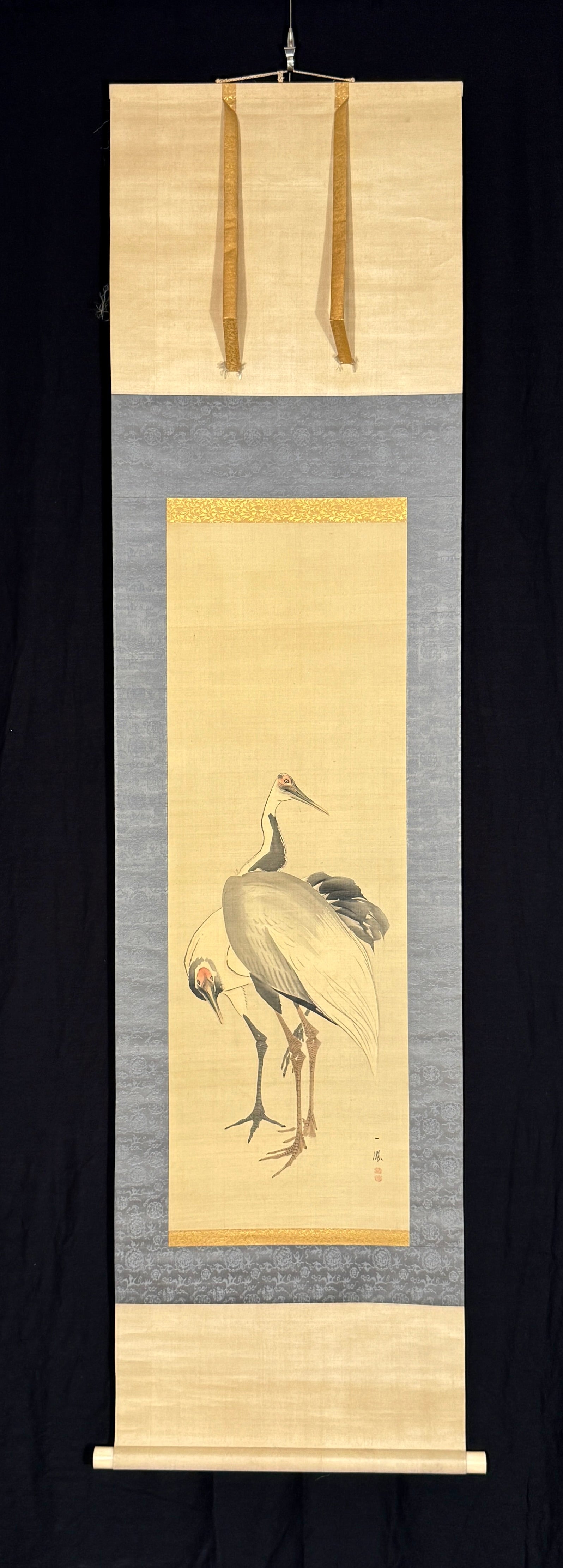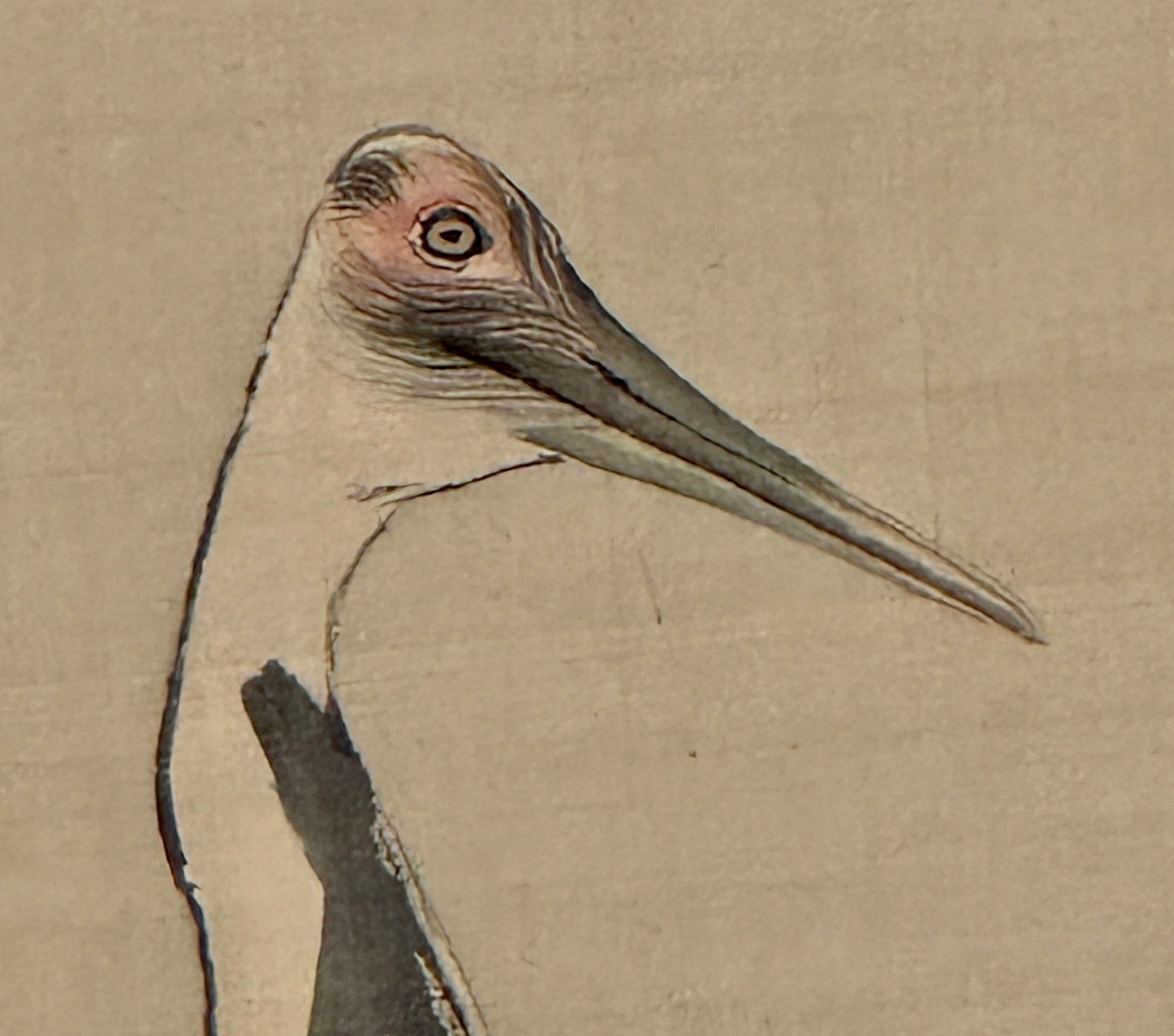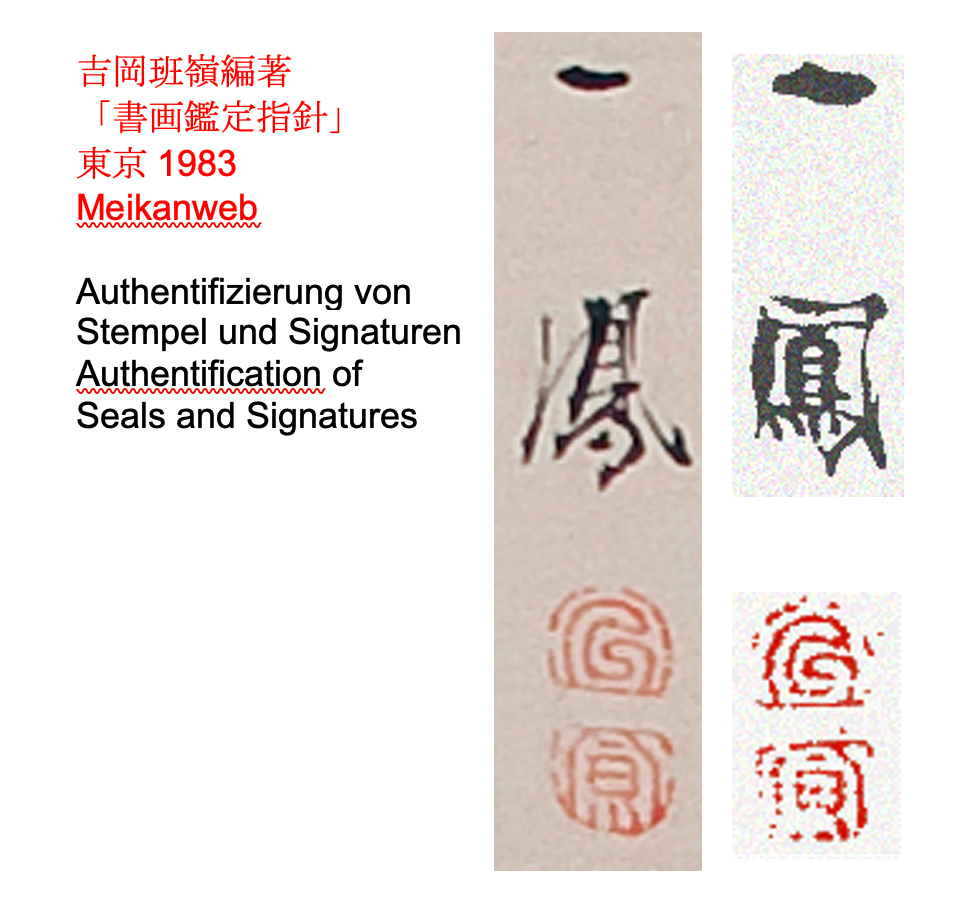Guignard Kyoto Collection
Two cranes | Mori Ippō 森一鳳 | 1798-1871
Two cranes | Mori Ippō 森一鳳 | 1798-1871
Couldn't load pickup availability
The Mori family produced great painters in the 19th century. But there is no need to imagine a blood relationship, because famous families secured their names for posterity through adoptions. This also applies to Mori Ippō. He was a student of Mori Tetsuzan, from whom he was allowed to take the Mori name and who was one of the ten best successors of the genius Maruyama Ōkyō. With this artist genealogy, Mori Ippō belongs to the center of the Shijō school, which in Kyoto was based on the aesthetic premises of Maruyama Ōkyō and was decisive for the art scene in Kyoto in the 19th century. At just over 50 years of age, Mori Ippō was recognized for his artistic achievements by being commissioned to paint sliding doors in the Imperial Palace in Kyoto.
Mori Ippō embodies the classic ideal of his academic style, in which the brilliance of the composition and the realistic depiction were combined with an enchanting suppleness of the brushwork and discreet coloring. In this picture, Mori Ippō plays with the large volumes of the cranes' bodies, whose white gives them an elegant weightlessness. And in the bird heads he plays with a tangible realism to give the subject a little sharpness. Nevertheless, image harmony remains the important goal, and so the balances of right-left and top-bottom could not be more balanced with the very natural-looking positions of the two birds.
With so much fine and sophisticated art, one almost forgets the iconographic background of the crane, which in Asia is a festive symbol of the longing for a long, thousand-year life.
